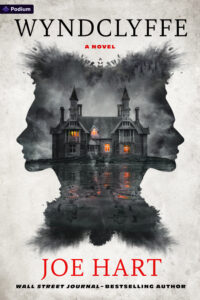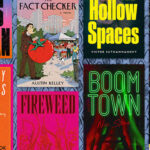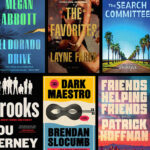There was this book my mom brought home when I was maybe eleven or twelve.
No idea where she got it. A rummage sale or bargain bin at a thrift store? Doesn’t matter. It was a little book, that’s the first thing I noticed. Smaller almost by half than a typical paperback. The title was Edgar Allan Poe: Tales of Mystery and Terror. The cover was illustrated as was the interior as I soon found out, but that cover—
Wowsa.
Picture a stone mansion, stately but decaying, tall windows, a soaring chimney, ornate ironwork decorating its rooflines. But amidst all this your attention is drawn to a massive fracture running from peak to foundation. A blood red sun is setting behind the building and it’s seeping through that split in the house like a mortal wound.
The image was so striking I can still see it some thirty years later.
What my young eyes feasted on inside was formative in a way I didn’t understand at the time. I devoured The Tell-Tale Heart and The Fall of House Usher (which I believe was the inspiration for the cover), along with The Gold Bug, and “FOR THE LOVE OF GOD, MONTRESOR!”—The Cask of Amontillado. The book dripped with gothic imagery, disturbing themes, and a creeping sense of dread which never really left me.
Historically the genre has been around since the late 18th century. Common elements run the gambit from psychological illness to crumbling architecture to the supernatural and encompass names we all know like Shelley, Wilde, Poe, Jackson, and King.
But what makes a story “gothic”, and why are we still fascinated by it hundreds of years after its inception?
Firstly, I’d argue it has a lot to do with it being one of the oldest forms of horror outside of folklore and religion. The expression and examination of what makes us afraid can be found in the isolation of the rotting house upon the hill—the one that’s supposedly haunted. Or in the distrust of the strange old man who lives alone at the edge of the village and seems to know much, much more than he should. Or in our very own vengeful hearts as our familial enemy is sealed into a dungeon alcove alive, brick by inevitable brick. The gothic provides a playground for authors to explore all structure and facet of what fear is made of—the power the past has over the present and future, what might exist just outside the bounds of our senses, and what terrors we might be capable of given the right or wrong circumstances.
Personally, I can’t help but think there’s a socioeconomic factor contributing to the genre as well, either purposeful or on the subconscious level. So many times, the focus of gothic fiction involves a wealthy house or family falling to ruin while harboring a horrible secret within their legacy. Enter a desperate character who the wealthy then use as a means to their ends. For me this definitely reads as social commentary regarding exploitation of labor and the examination of class systems. The distrust of the upper class and their inherent corruption tends to permeate many of the works, which like any good fiction highlights disparities within society.
And let’s not forget the indulgence of spectacle—gothic lit as well as film brims with it by way of immense buildings, untold wealth, or larger than life characters. There’s a scene in Guillermo del Toro’s Crimson Peak, a modern gothic masterpiece in my opinion, when Tom Hiddleston and Mia Wasikowska’s characters arrive at Allerdale Hall (Hiddleston’s ancestral mansion). When they step inside, the grandeur of the space is only slightly overshadowed by the decay it’s befallen—the roof, several stories overhead, has rotted away and leaves and snow drift elegantly through the hole, cluttering the grand entrance. This image carries plenty of weight by highlighting not only the former splendor of the hall but also foreshadows the decay within the character’s morality as well. Spectacle is also enchanting in its own right. Even though a character may know there is danger within the lavish setting and eccentric people they meet, they are intoxicated by them as well.
But for me, the most prominent feature that comes to mind when thinking of gothic lit is the unknown. Mystery is the allure that draws the wary character toward the crumbling mansion just as it draws us in as well. Within the mystery lies possibility, both good and very, very bad. For Mira Caine, the main character in my novel Wyndclyffe, the offer of a better life for her and her intellectually disabled younger brother is what brings her to the isolated Wyndclyffe estate situated on an island in the St. Lawrence River. But the mystery of the tragedies that have taken place there is what drives the story. What is the strange circle of stones out in the woods and what is it used for? What do the unsettling entries in the ancient journal Mira stumbles onto mean? Why do the mansion and its grounds feel eerily familiar to her? And what is the unspeakable secret at the heart of Wyndclyffe? Mystery triggers our need to know and keeps us running full-tilt into the dark even when we know we should slow down, and good gothic literature tends to have all the hallmarks of the unknown which keeps the pages turning.
I think to answer the question; the genre’s fascination lies in its multifaceted nature. Gothic fiction is horrific. It is beautiful. It evokes awe and revulsion alike. For centuries it’s been steeped in isolation, fading grandeur, social commentary, desperation, terrifying secrets, mental illness, ghosts, echoes of the past, as well as mystery—all of it coursing through the genre like an eerie red sunset shining through the fracture of a decaying mansion.
***


















